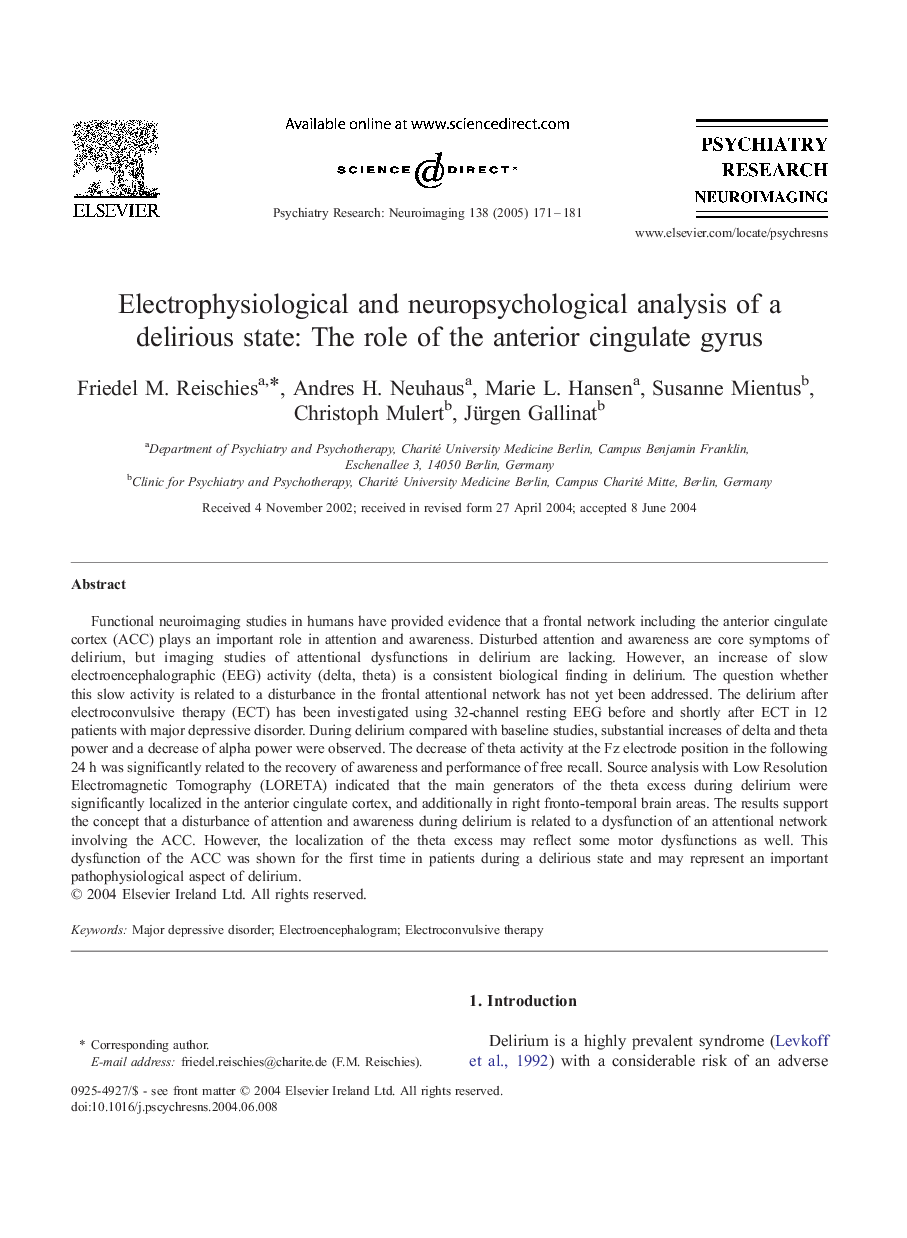| Article ID | Journal | Published Year | Pages | File Type |
|---|---|---|---|---|
| 10305430 | Psychiatry Research: Neuroimaging | 2005 | 11 Pages |
Abstract
Functional neuroimaging studies in humans have provided evidence that a frontal network including the anterior cingulate cortex (ACC) plays an important role in attention and awareness. Disturbed attention and awareness are core symptoms of delirium, but imaging studies of attentional dysfunctions in delirium are lacking. However, an increase of slow electroencephalographic (EEG) activity (delta, theta) is a consistent biological finding in delirium. The question whether this slow activity is related to a disturbance in the frontal attentional network has not yet been addressed. The delirium after electroconvulsive therapy (ECT) has been investigated using 32-channel resting EEG before and shortly after ECT in 12 patients with major depressive disorder. During delirium compared with baseline studies, substantial increases of delta and theta power and a decrease of alpha power were observed. The decrease of theta activity at the Fz electrode position in the following 24 h was significantly related to the recovery of awareness and performance of free recall. Source analysis with Low Resolution Electromagnetic Tomography (LORETA) indicated that the main generators of the theta excess during delirium were significantly localized in the anterior cingulate cortex, and additionally in right fronto-temporal brain areas. The results support the concept that a disturbance of attention and awareness during delirium is related to a dysfunction of an attentional network involving the ACC. However, the localization of the theta excess may reflect some motor dysfunctions as well. This dysfunction of the ACC was shown for the first time in patients during a delirious state and may represent an important pathophysiological aspect of delirium.
Related Topics
Life Sciences
Neuroscience
Biological Psychiatry
Authors
Friedel M. Reischies, Andres H. Neuhaus, Marie L. Hansen, Susanne Mientus, Christoph Mulert, Jürgen Gallinat,
